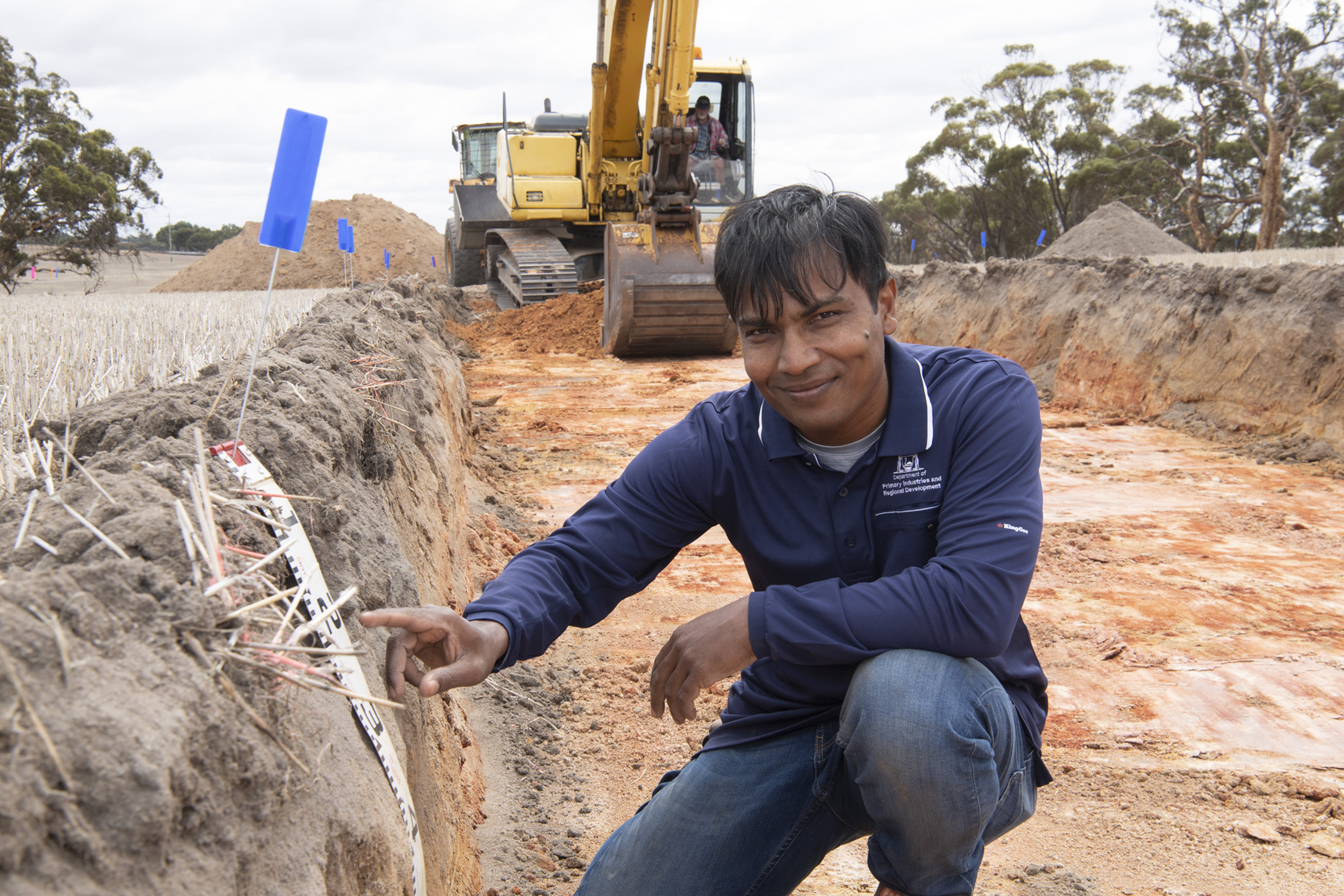
Blue sky research that used soil reengineering to remove multiple soil constraints and lift productivity by up to 80 per cent will help unearth strategies that could lead to the next big leap in yield increases.
The $22 million Department of Primary Industries and Regional Development (DPIRD) project, with Grains Research and Development Corporation (GRDC) co-investment, will be profiled at the 2023 Grains Research Update in Perth this month.
Researchers used an excavator to reconstruct 80 centimetres of soil – in 10 centimetre layers – incorporating soil amendments and inorganic nutrients to optimise water use efficiency and define a new water limited yield potential.
Project leader, DPIRD soil scientist Gaus Azam, said despite above average seasons in 2021 and 2022, grain yields improved to levels never seen before in the history of broadacre cropping in Western Australia.
“Crop yields increased by two to four fold in the first two years of the trial, depending on the type of crop, soil and season,” he said.
“Data captured from 11 sites from Northampton in the north, to Salmon Gums in the south, showed soil reengineering completely removed soil water repellence, acidity, compaction, sodicity, aluminium and boron toxicities.
“Nutrient availability and uptake, water infiltration and holding capacity and plant available water also improved, almost immediately – effectively more than doubling the water use efficiency.
“Crops produced roots to 80cm deep compared with the shallow roots of 20 to 30 cm in the untreated control treatments.
“This resulted in yield increases of up to 1.7 tonnes per hectare for canola, 2.3 t/ha for wheat and 2.7t/ha for barley – far exceeding estimated water-limited yield potential.”
The research findings have significant implications for 12 million hectares of arable land in Western Australia – across deep sands, duplex and heavy soils with multiple soil constraints.
Constraints include soil acidity, subsoil compaction, sodicity and water repellence, which regularly occur in combination to limit nutrient and water use efficiency – resulting in decreased yields.
Each soil reengineering experiment consisted of between eight and 14 treatments replicated three to four times in a comparatively large plots of 20 square metres, equating to a trial size of up to one hectare.
The soil amendments included lime, gypsum, clay, acidic sand and organic matter, such as compost, biochar and chaff, while inorganic nutrients like nitrogen, phosphorus and potassium were applied.
These 11 sites will be monitored for at least five years to determine whether and for how long the yield transformation can be sustained.
Dr Azam said the research would now look to applying the findings from the visionary research to a commercial scale to enhance productivity, sustainability and profitability of broadacre cropping.
“With this initial research we designed the experiment to remove all soil constraints and allow us to define the real water limited yield potential for a range of soil types and locations," he said.
“The next step is to see how these practices can be adapted to a real-world situation to determine how it can practically and cost effectively be integrated into commercial grain operations.”
The 2023 GRDC Grains Research Update will be held at Crown Perth on 27 and 28 February. For more information or to register visit the GRDC website or contact the Grains Industry Association of WA on 08 6262 2128 or researchupdates@giwa.org.au.
Dr Azam will also be presenting at regional Grains Research Updates, including Bencubbin on 2 March, Northampton on 8 March, Dalwallinu on 14 March and Albany on 20 March.
Picture caption: DPIRD soil scientist Dr Gaus Azam in a trial plot at Meckering, where blue sky reengineering research is breaking barriers to yield potential.


